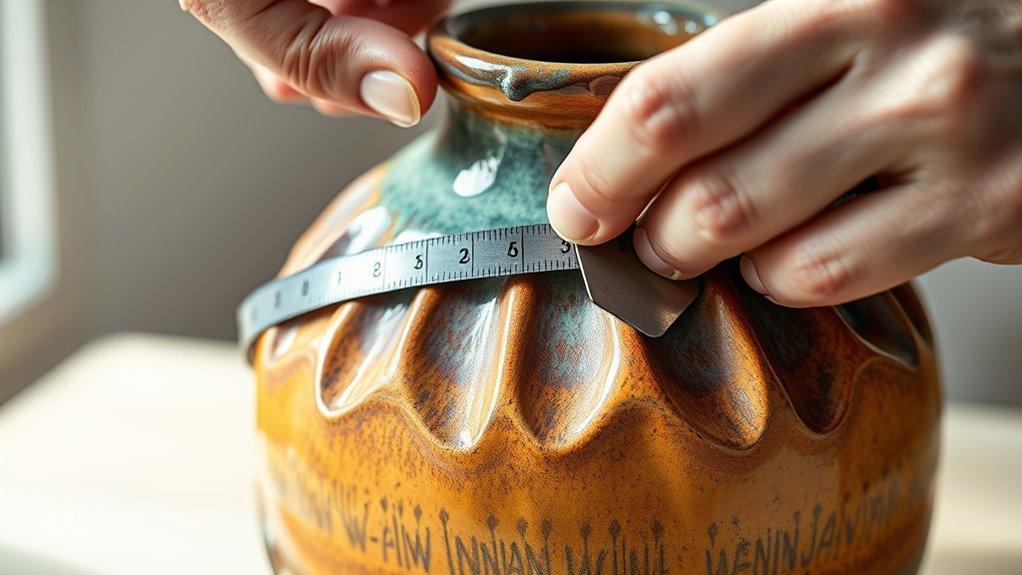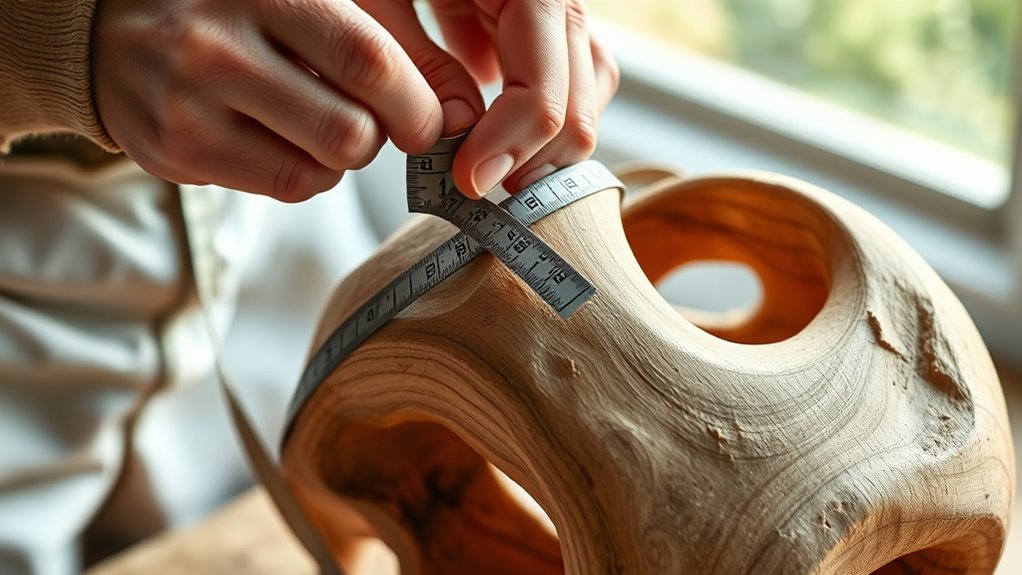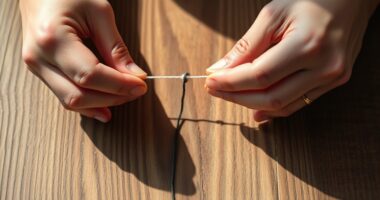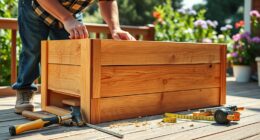To measure curves and irregular shapes accurately, use flexible tools like tape measures and bendable rulers that conform to the surface. Gently press the tape or ruler against the contours without pulling tight, following every curve carefully. Keep your tools steady and double-check measurements for precision. Practicing these techniques ensures better results when working on complex surfaces. If you want to master these methods, continue exploring tips and tricks for flexible measuring.
Key Takeaways
- Use flexible tools like tape measures or bendable rulers to conform to curves and irregular shapes accurately.
- Position the measuring device gently along the surface, avoiding stretching or gaps for precise readings.
- Follow the contours carefully, keeping the tool snug but not tight to prevent measurement distortion.
- Double-check measurements, especially for detailed or critical projects, to ensure accuracy.
- Practice and patience improve skill in measuring complex shapes with flexibility and confidence.

Have you ever wondered how to accurately measure curves and irregular shapes? It’s a common challenge, especially when traditional tools fall short. Fortunately, with the right approach and tools, you can get precise measurements with ease. The key lies in understanding how to utilize tape measurement and flexible rulers effectively. These tools are designed to adapt to the contours of any shape, making your job much simpler. Additionally, understanding the importance of safety and proper technique when working with measuring tools can help prevent errors and injuries.
Measuring curves and irregular shapes becomes easy with flexible tools and patience.
When measuring curves, a tape measurement is often your best friend. Unlike rigid rulers, tape measures are flexible and can conform to the shape of the object you’re measuring. To use one effectively, start by positioning the tape at the starting point of your curve or irregular shape. Gently press the tape against the surface, following its contours without pulling too tight, which could distort the measurement. As you work along the curve, keep the tape snug against the surface but avoid stretching it, ensuring your measurement remains accurate. Once you reach the end of the curve, read the measurement directly from the tape. This method works well for measuring the circumference of round objects, the length of wavy edges, or even irregular surfaces like furniture or architectural features.
Flexible rulers are another excellent tool for capturing the dimensions of complex shapes. Unlike standard rulers or straightedges, flexible rulers bend and curve to match the shape you’re working with. To use a flexible ruler, lay it along the surface, gently pressing it into the curves or irregularities. Because it molds to the shape, you can easily trace and measure areas that would be difficult with rigid tools. For instance, if you’re measuring the outline of a decorative molding or an irregular fabric piece, a flexible ruler allows you to follow the edges precisely. Once aligned, you can mark measurements directly on the ruler or transfer them to paper for further calculations.
Both tape measurement and flexible rulers are invaluable for achieving accuracy in projects involving curves and irregular shapes. They help avoid the inaccuracies that come from trying to measure such shapes with traditional, rigid tools. Remember to take your time and keep the measuring device steady against the surface. This patience ensures you capture the true shape without distortion. Also, double-check your readings, especially when working on detailed or critical projects. With practice, you’ll find that these tools become second nature, making your measurements more reliable and your work more precise. Whether you’re working on DIY crafts, upholstery, or architectural details, mastering these techniques will substantially improve your ability to measure complex shapes accurately.
Frequently Asked Questions
What Materials Are Best for Flexible Measuring Tools?
You should choose materials like flexible plastic or soft metal for measuring tools because they offer excellent material flexibility, allowing you to easily measure curves and irregular shapes. These materials also guarantee tool durability, so they won’t break or wear out quickly. Silicone and flexible rubber are also good options, providing both flexibility and resilience. Using these materials helps you get accurate measurements while maintaining the tool’s longevity.
How Do Temperature Changes Affect Measurement Accuracy?
Think of temperature changes as a hidden artist, subtly stretching or shrinking your measuring tools through thermal expansion. You might not perceive it, but it affects accuracy. To stay precise, you need effective calibration techniques that account for these variations. When temperatures fluctuate, your measurements can drift, so regularly recalibrating ensures your tools stay true, maintaining accuracy despite thermal expansion’s quiet influence.
Can Digital Tools Improve Measurement Precision?
Yes, digital tools can substantially improve measurement precision. They often feature digital calibration, ensuring your measurements stay accurate over time, and adhere to strict measurement standards. With digital devices, you get consistent readings, reduced human error, and easier data recording. This makes them ideal for measuring curves and irregular shapes, where precision is essential. Using digital tools ultimately helps you achieve more reliable and accurate results in your measurements.
How to Measure Complex 3D Shapes Accurately?
You can measure complex 3D shapes with jaw-dropping precision by mastering calibration procedures and ensuring measurement repeatability. Use advanced 3D scanners or coordinate measuring machines (CMMs) for the most accurate results. Regular calibration keeps your tools on point, while repeating measurements confirms consistency. This way, you’ll capture every curve and contour flawlessly, turning intricate shapes into precise digital models with ease and confidence.
Are There Specific Techniques for Measuring Very Large or Small Shapes?
Yes, you should use specialized techniques for large or small shapes. For large shapes, you might need laser scanners or large-format measuring tools, guaranteeing proper calibration to address accuracy challenges. For tiny shapes, use high-precision instruments like micrometers or coordinate measuring machines, and regularly calibrate to maintain measurement consistency. Always verify your methods to avoid calibration challenges and ensure your measurements are reliable across different sizes.
Conclusion
Now that you’ve learned how to measure curves and irregular shapes with flexibility, you’re like an artist wielding a brush that adapts to every twist and turn. Your measurements become a dance of precision and creativity, turning unpredictable forms into perfect data. With these skills, you’re not just capturing shapes—you’re capturing their essence, like a painter capturing the soul of a landscape. Embrace the challenge, and let your measurements flow as freely as the shapes you seek to understand.









